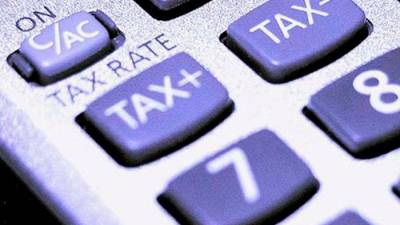
Subscribe to our Telegram channel for the latest updates on news you need to know.
WASHINGTON, March 11 ― US consumer prices increased solidly in February, with households paying more for gasoline, but underlying inflation remained tepid amid weak demand for services like airline travel and hotel accommodation.
The mixed report from the Labour Department yesterday did not change expectations that inflation will push higher and exceed the Federal Reserve's 2 per cent target, a flexible average, by April as declining Covid-19 infections and a faster pace of vaccinations allows the economy to reopen.
Inflation is also seen accelerating as price decreases early in the coronavirus pandemic wash out of the calculations. Many economists, including Fed Chair Jerome Powell expect the strength in inflation will not stick beyond the so-called base effects and the reopening of services businesses.
“Base effects and one-time price increases stemming from the reopening of the economy and some pass-through of higher prices from supply chain bottlenecks should lift core inflation to 2.5 per cent in the spring,” said Kathy Bostjancic, chief US financial economist at Oxford Economics in New York.
“However, the acceleration in inflation will be transitory and will not represent the start of an upward spiral.”
The consumer price index increased 0.4 per cent last month after rising 0.3 per cent in January. A 6.4 per cent advance in gasoline prices accounted for more than half of the gain in the CPI.
In the 12 months through February, the CPI shot up 1.7 per cent, the largest rise since February 2020, after climbing 1.4 per cent in the 12 months through January. Last month's CPI readings were in line with economists' expectations.
Gasoline prices surged 7.4 per cent gain in January. Food prices climbed 0.2 per cent last month, with the cost of food consumed at home gaining 0.3 per cent. The cost of food consumed away from home rose 0.1 per cent.
Excluding the volatile food and energy components, the CPI nudged up 0.1 per cent after being unchanged for two straight months. The so-called core CPI was lifted by a surprise pick-up in rents as well as rising costs for recreation, medical care and motor vehicle insurance, which offset declines in prices for airline fares, hotel and motel rooms, used cars and trucks and apparel.
The core CPI rose 1.3 per cent on a year-on-year basis, retreating from January's 1.4 per cent gain. The Fed tracks the core personal consumption expenditures (PCE) price index for its inflation target. The US central bank has signaled it would tolerate higher prices after inflation persistently undershot its target. The core PCE price index is at 1.5 per cent.
Stocks on Wall Street were trading higher. The dollar was steady against a basket of currencies. Prices of US Treasuries rose.
Labour market slack
There are fears from some quarters that a very expansionary fiscal policy, marked by nearly US$900 billion (RM3.7 trillion) in additional pandemic relief money in late December and President Joe Biden's US$1.9 trillion rescue package, expected to be approved by Congress this week, could stoke inflation.
That, together with the Fed's monthly bond purchases could cause the economy, which plunged into recession in February 2020, to overheat. US Treasury yields have spiked in anticipation of stronger economic growth this year and higher inflation. But there is plenty of slack in the labour market, with at least 18 million Americans on unemployment benefits.
Still, the stronger inflation prophecies could become self-fulfilling. Consumers are already anticipating to pay more in the near-term and many small business are planning price increases. Surveys this month showed measures of prices paid by manufacturers and services industries racing to levels last seen in 2008 in February.
Reports from the Atlanta Fed yesterday showed businesses' one-year inflation expectations jumped to 2.4 per cent in March from 2.2 per cent in February. Its sticky-price CPI, a weighted basket of items that change price relatively slowly, jumped 2.3 per cent in February after rising 1.1 per cent in January.
“Data suggests that we're not only witnessing the end of disinflation for some time, but rapid growth and firmer prices will punctuate the bounce-back from Covid lows,” said Rick Rieder, BlackRock's chief investment officer of global fixed income.
“However, while we think growth will be surprisingly strong, we also think that over the intermediate-term the Fed is correct in thinking inflation will remain muted by the same factors that have held sway over the past two decades, the demographic trend of population aging and technological disinflation.”
In February, apparel prices fell 0.7 per cent after three straight monthly increases. The cost of healthcare rose 0.3 per cent, driven by increases in the costs of doctor visits, though consumers paid less for prescription medication and hospital visits.
The cost of airline fares tumbled 5.1 per cent after decreasing 3.2 per cent in January. Owners' equivalent rent of primary residence, which is what a homeowner would pay to rent or receive from renting a home, rose 0.3 per cent after nudging 0.1 per cent in January.
The increase occurred despite the rental housing market being hurt by a flight from city centers to suburbs and other lower density areas. Many landlords have entered into forbearance agreements with tenants.
“The stabilization in our shelter tracker and a waning drag from rent forgiveness suggest scope for some of the rental acceleration to be sustained in the spring months,” economists at Goldman Sachs wrote in a note.
Services excluding energy rose 0.2 per cent in February after being unchanged for two consecutive months. Consumer spending on services is about 3.3 per cent below its pre-pandemic level. ― Reuters
Source: Malay Mail

No comments:
Post a Comment